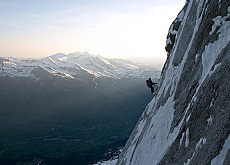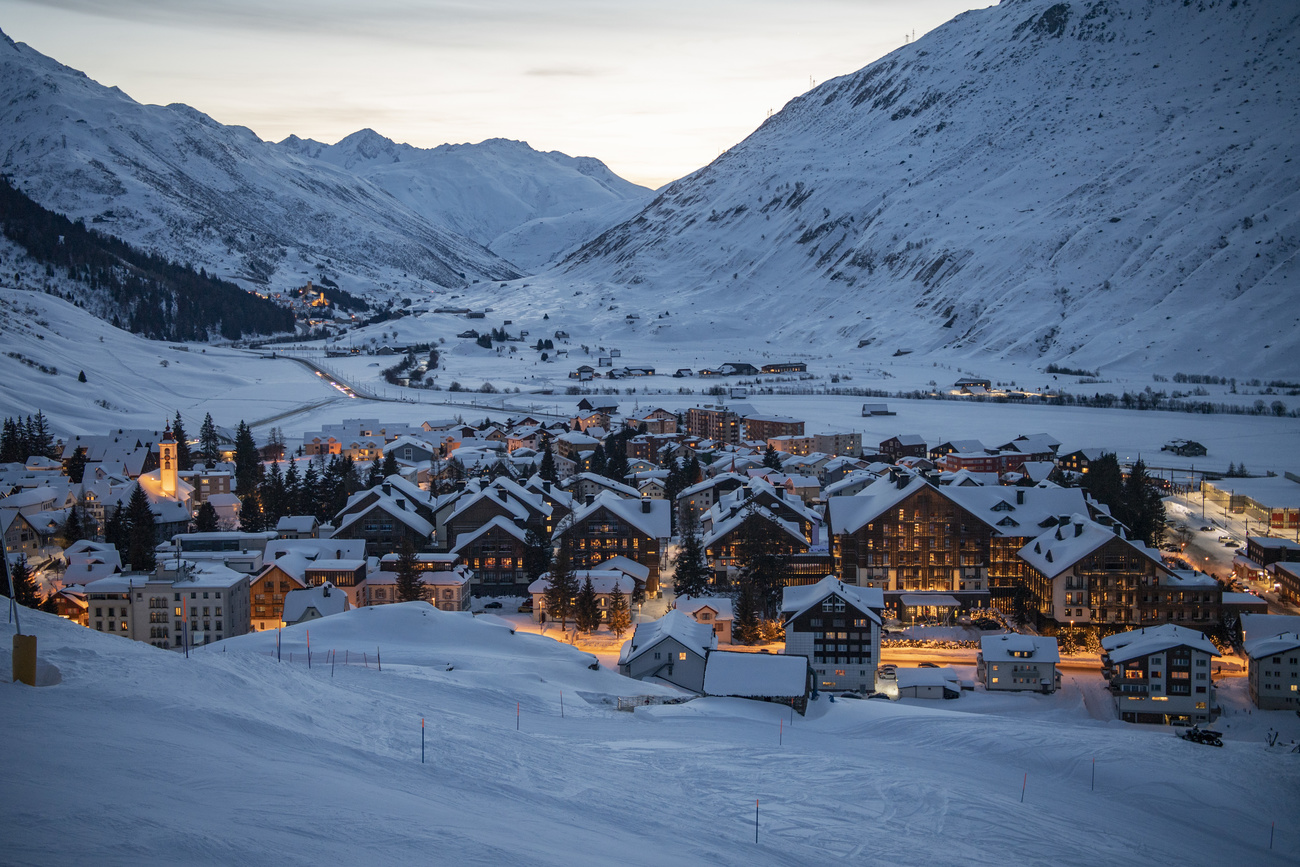The Alps film hero describes “sense of joy”

John Harlin III, the main character in the IMAX film, The Alps, tells swissinfo he hopes to capitalise on the documentary's success to promote mountain conservation.
The American adventurer, writer and editor, who grew up partly in Switzerland, talks about his love for the Alps and some of the problems facing the world’s mountain communities.
Set against a backdrop of magnificent alpine peaks, the IMAX film tells the story of Harlin’s quest to conquer the formidable north face of the Eiger which took his father’s life more than 40 years ago.
The Alps is currently being screened at festivals and IMAX cinemas around the world. In the first five months, more than 100,000 people paid to see the large-format film at Switzerland’s Transport Museum.
swissinfo: The film has been very successful in Switzerland and elsewhere. How has it changed your life, if at all?
John Harlin: It’s been a wonderful process going around North America and just recently London, introducing the film to new audiences and sharing my love of Switzerland and the mountains, my family and my father with a lot of people. When I showed the film in London, somebody came up to me from Switzerland and said, ‘boy, that film really makes me proud to be Swiss’, and that felt great.
swissinfo: You grew up partly in Switzerland and have spent most of your life living in mountain communities. What is it that attracts you to the mountains?
J.H.: I love other environments too. It’s not that I’m exclusively mountain oriented. But there are many things about mountains – their diversity, the challenge. I think it’s above all the beauty. The contrast. My favourite is green valleys with white peaks behind them.
There are a lot of people who like to go on long Himalayan expeditions or to Antarctica or the Arctic in winter where you are in a land of pure white and that’s not my thing so much. I like the contrast – going back and forth between the land of glaciers and rock, the verticality, and then down into the green, living world. There is this sense of joy that comes from the transition.
swissinfo: Which is why you love Switzerland so much?
J.H.: That’s very much why I love Switzerland. I love the Alps and also the North American mountains. They’re very different. The North American mountains are mostly wilderness and when I go there, like most North Americans, I’m looking for a wilderness experience. We don’t have [mountain] lifts that take us everywhere.
But I love coming to the Alps and eating in mountain restaurants and sleeping in huts and meeting entire families there. The mountains are much more integrated into the culture.
swissinfo: How have you seen mountain environments change in your lifetime?
J.H.: They are changing in many ways. When we first came to Europe in 1959 there was a lot of garbage, especially in France where we spent a lot of time. They loved the peaks but there was very little respect for the outdoor environment the way it had already been developed in North America. Now I come back and see a much more respectful treatment of the mountains. But of course lifts have proliferated.
I think the attitude Europeans had – we can go anywhere and do anything in the mountains – has gone its course and now it’s in the reigning-back phase where people are starting to say, ‘wait a minute, we need to preserve some spaces, we need to keep people out of some areas’.
swissinfo: Where is the film going to take you now? Do you have ideas for similar projects?
J.H.: My entire career has been basically in recreation journalism, specifically climbing, backpacking and wilderness travel, and I initially wrote a series of guidebooks and now I work for the American Alpine Club editing the American Alpine Journal.
But for many years I’ve wanted to change my focus and I’m starting to explore sustainable development issues – how to keep the mountains wild and how to allow people to develop their social and economic standards while still living in the mountains without damaging the environment.
swissinfo: What kind of projects do you foresee carrying out or leading?
J.H.: I might start by focusing on what the Swiss people have been doing in their own mountains and how they apply that elsewhere. I think very often projects are developed in a certain place and people in other mountains in the world don’t know what’s being done so I’d like to help that communication process through writing books but also very much through developing websites that would share the information, and probably through film or television series that illustrate what’s going on.
swissinfo: So how could Switzerland be an example for a community in the Himalayas or a mountain community in South America for example?
J.H.: An example would be the sharing of alpine pastures for cows. In Grindelwald they worked out a communal model how to get the most out of the pastures without degrading them and allowing different families to share…there are a lot of overgrazed parts of the world and maybe they could learn from the Swiss in that way.
And Switzerland has lots of hydropower, and it’s a very technologically oriented country.
Released in 2007, the large-format film uses the Swiss Alps as the spectacular backdrop to tell the story of the attempt by John Harlin III to climb the north face of the Eiger.
Harlin set out on the adventure to exorcise the ghosts left by his father’s death on the same mountain when Harlin was only nine year’s old.
In 1962, his father, John Harlin II, became the first American to climb the north face which led to his obsession to become the first ever to find a direct route straight up the middle of the 1,800 metre, near vertical wall.
Four years later, he fell to his death during a “direttissima” attempt after his rope broke.
He is the editor of the prestigious American Alpine Journal, the journal of record for new mountain routes worldwide, and has written and edited several books about mountains, climbing and travel.
As an adventurer, he has made first ski descents, climbed new routes and made first river descents in South America, the Himalayas, North America and in the Alps.
His book, The Eiger Obsession: Facing The Mountain That Killed My Father, is published by Simon & Schuster.
John Harlin III currently lives in Oaxaca, Mexico with his wife and daughter.

In compliance with the JTI standards
More: SWI swissinfo.ch certified by the Journalism Trust Initiative













You can find an overview of ongoing debates with our journalists here . Please join us!
If you want to start a conversation about a topic raised in this article or want to report factual errors, email us at english@swissinfo.ch.